


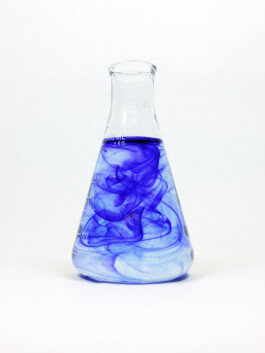
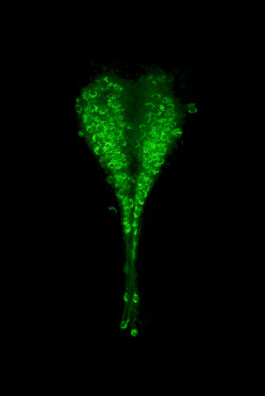

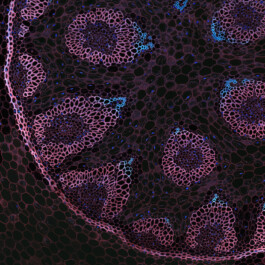
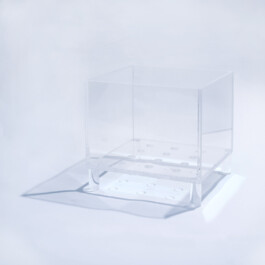
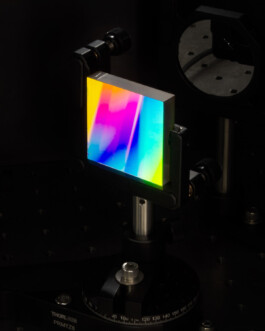
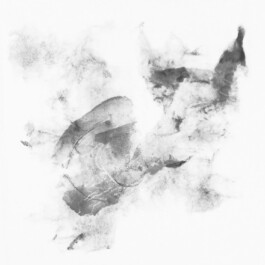
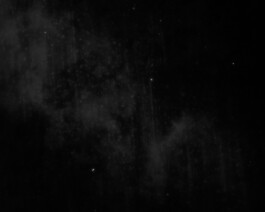
The research process in neuroscience is often scattered by unexpected outcomes: failed experiments, incomplete analysis, wrong interpretations, negative results, or unexpected observations that deviate from the original hypothesis. Although the latter phenomenon, called the serendipity principle, can result in breakthrough discoveries, the outcomes resulting from this process are generally not exploited and meant to be forgotten. Similarly, negative results are rarely reported in scientific publications. The series tends to inventory these outcomes and reveals from oversight their unexpected aesthetics. It is made of a mix of microscopy images, standard camera photographs, and computer generated graphics resulting from data visualization, each one is accompanied by a text describing the details of the picture. In absence of a clear context, each individual image plays with abstraction and contrasts with the precision of the description coming with it. By this process, its purpose becomes blurry and open to imagination. The series questions how a type of communication, here visual, may carry a different purpose depending on the field of study: rational but ignored through the scientific process, it carries an esthetic and conceptual purpose intending to stimulate the imagination when exploited by the artistic gait.
After completing a master's and a Ph.D. in Neuroscience at the University of Lausanne and Geneva (Switzerland) respectively, Olivier Gschwend worked as a neuroscientist at Cold Spring Harbor Laboratory (NY, USA) for more than 4 years. In parallel with his scientific career, Olivier started photography in 2008. Fascinated by consciousness, studying neuroscience appeared the most straightforward attempt to understand it. However, neuroscience research fails to fully comprehend it. Part of his photography work tends to complement this void and explores it further by questioning identity, beliefs, memory, or ego. Fueled by his synergetic experience, Olivier recently used the outcome of his neuroscience research to probe the transdisciplinarity of science and art.
oliviergschwend.ch
Olivier Gschwend zeigt verschiedene Arten von Mikroskopie-Bildern, die fehlgeschlagene Experimente, unvollständige Analysen oder Resultate, die von der ursprünglichen Hypothese abweichen, dokumentieren. Sie haben eines gemeinsam: Die Bilder würden im wissenschaftlichen Kontext nie veröffentlicht. Hier jedoch vermitteln sie eine vermeintliche wissenschaftliche Seriosität, die durch ausführliche Bildunterschriften begleitet wird. Diese beschreiben jeweils das Experiment oder die Hypothese, die zum Bild führte und lösen so ein Nachdenken über das Zufallsprinzip aus, welches oft zu unbeabsichtigten, bahnbrechenden Entdeckungen führt und zum Begehen von und Lernen aus Fehlern ermutigt.








The research process in neuroscience is often scattered by unexpected outcomes: failed experiments, incomplete analysis, wrong interpretations, negative results, or unexpected observations that deviate from the original hypothesis. Although the latter phenomenon, called the serendipity principle, can result in breakthrough discoveries, the outcomes resulting from this process are generally not exploited and meant to be forgotten. Similarly, negative results are rarely reported in scientific publications. The series tends to inventory these outcomes and reveals from oversight their unexpected aesthetics. It is made of a mix of microscopy images, standard camera photographs, and computer generated graphics resulting from data visualization, each one is accompanied by a text describing the details of the picture. In absence of a clear context, each individual image plays with abstraction and contrasts with the precision of the description coming with it. By this process, its purpose becomes blurry and open to imagination. The series questions how a type of communication, here visual, may carry a different purpose depending on the field of study: rational but ignored through the scientific process, it carries an esthetic and conceptual purpose intending to stimulate the imagination when exploited by the artistic gait.
After completing a master's and a Ph.D. in Neuroscience at the University of Lausanne and Geneva (Switzerland) respectively, Olivier Gschwend worked as a neuroscientist at Cold Spring Harbor Laboratory (NY, USA) for more than 4 years. In parallel with his scientific career, Olivier started photography in 2008. Fascinated by consciousness, studying neuroscience appeared the most straightforward attempt to understand it. However, neuroscience research fails to fully comprehend it. Part of his photography work tends to complement this void and explores it further by questioning identity, beliefs, memory, or ego. Fueled by his synergetic experience, Olivier recently used the outcome of his neuroscience research to probe the transdisciplinarity of science and art.
oliviergschwend.ch
Olivier Gschwend zeigt verschiedene Arten von Mikroskopie-Bildern, die fehlgeschlagene Experimente, unvollständige Analysen oder Resultate, die von der ursprünglichen Hypothese abweichen, dokumentieren. Sie haben eines gemeinsam: Die Bilder würden im wissenschaftlichen Kontext nie veröffentlicht. Hier jedoch vermitteln sie eine vermeintliche wissenschaftliche Seriosität, die durch ausführliche Bildunterschriften begleitet wird. Diese beschreiben jeweils das Experiment oder die Hypothese, die zum Bild führte und lösen so ein Nachdenken über das Zufallsprinzip aus, welches oft zu unbeabsichtigten, bahnbrechenden Entdeckungen führt und zum Begehen von und Lernen aus Fehlern ermutigt.